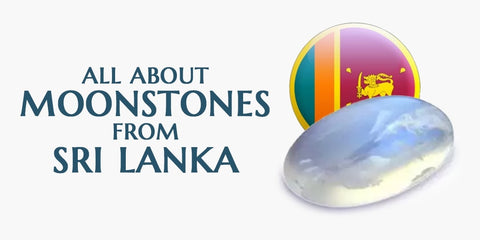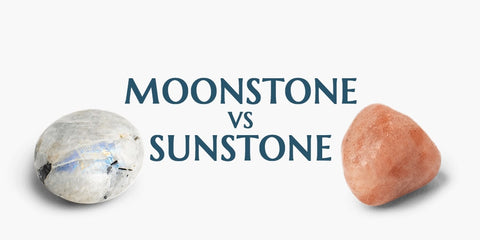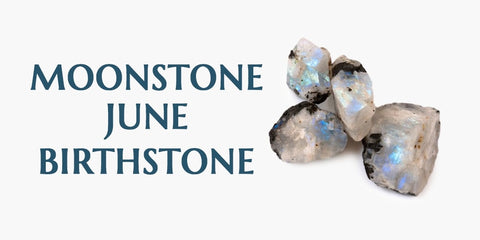
Moonstone vs Opal
Designers and jewelers often make the mistake of being ignorant about the differences between opal and moonstone. Indeed, they confuse one with the other and sometimes claim that both are names of the same mineral. We have therefore written a detailed article in the hope that gem lovers will know exactly what they are buying when they go for an opal or a moonstone.
Differences between moonstone and opal

Moonstone is a natural mineral from the feldspar family. Its layered structure creates the effect of an internal shimmer, which can make one think of the aurora borealis so remarkable and beautiful is the effect visualized. Moonstone has a translucent to milky white color, which can turn blue depending on the quality of the stone and the viewing angle.
On the other hand, in terms of chemical composition, opal is silica. Opal differs from other gemstones in that it is not a crystalline substance. It is important to note that there are several varieties. Opal is also milky and transparent with a blue sheen, sometimes blue/pink, sometimes green, sometimes rainbow colored with glitter.
The main differences between opal and moonstone are therefore in their metaphysical nature as their color seems identical, unless you are a connoisseur, with practice, the difference between the two becomes very simple to identify with the naked eye.
Characteristics of moonstone vs opal
Moonstone

Moonstones are feldspars of different hues. They can be translucent, with a bluish sheen, opaque, light brown, pink, gray. Moonstone inspires the beginning of something new, and is closely related to intuition. This stone is filled with feminine energy and is therefore mainly suitable for women and for strengthening femininity.
- Origin of the name : The origin comes from the Sanskrit words "kanta", meaning "beloved", and "chandra", meaning "moon".
- Group of belonging : Feldspars.
- Chemical composition : Double silicate of aluminum and potassium, KAlSi38O8
- Crystal System : Monoclinic
- Hardness : Between 6 and 6.5 Mohs
- Deposits : Australia, Burma, Brazil, India, Madagascar, Sri Lanka, Tanzania, United States.
- Color : Colorless, white, bluish, yellowish reflections.
Opal

Opal is special because of its color and brilliance. This gemstone contains 10% water and its internal structure consists of tiny microscopic spheres that produce the special opalescent luster by refracting light rays in different ways. Opals come in a variety of colors - black, dark, gray, white - milky. Fire opal can be yellow-red, brown-red. In hot, dry conditions, opal quickly loses its wonderful luster as the water dries out. Then, when placed in water, after some time, the stone seems to come back to life and becomes beautiful and shiny again. Opal is also quite fragile. If it has a crack, it can break.
- Origin of the name : From Sanskrit "Upala" meaning precious stone. From Latin Opalus and Greek Opallios, meaning "to see a change of color".
- Chemical composition : Hydrous silicon dioxide, SiO2. nH2O.
- Crystal System : Amorphous (clustered aggregates).
- Hardness : Between 5.5 and 6.5 Mohs
- Deposits : Australia, Brazil, Guatemala, Honduras, Japan, Mexico, Peru, U.S.A.
- Colors : Milky white with shades of gray that can be colored (yellow, pink, green, purple).
Metaphysical differences between opal and moonstone
Opal is a form of hydrated silica, formula SiO2.nH2O. Moonstone is an orthoclase (KAlSi3O8) whose optical properties have the characteristic of being opalescent. Opalescence is a property present in many minerals and is found particularly in certain pieces of opal (especially noble opal), hence the name that derives.
In the case of opal, this property, which plays on internal reflections of the order of the wavelength of the incident light, is caused by the arrangement of the various grains of opal which consists of a stack of small balls of silica. In the case of moonstone, it is in fact a very fine alternation of lamellae of orthoclase (KAlSi3O8) and albite (NaAlSi3O8) giving an opalescence centered on the middle of the visible spectrum. If these lamellae are even finer, the opalescence is blue and is then called adularescence, a term used exclusively for moonstone.
Origin of the moonstone vs opal
Moonstone

According to Hindu mythology, moonstone was created with the light of the moon. Indeed, if you take a rounded moonstone, it will be very difficult to associate it with anything but the moon itself. Besides the Hindu legend, the moonstone was first discovered in the mountains of Adula, hence its scientific name. On the territory of the Russian Federation, there are deposits of moonstone from the Kola Peninsula to Khabarovsk itself. However, the highest quality moonstones are found in Sri Lanka and Myanmar.
It has been used for thousands of years in jewelry, the Romans being great admirers of this gemstone, to which they attributed beneficial powers from the celestial star. The Romans associated the stone with the goddess of the hunt, Diana, and the Greeks with Aphrodite and Selene, the goddess of love and the moon. The moonstone became popular in the 20th century, when René Lalique created many pieces of luxury jewelry and made it popular to the masses.
Opal

Its name derives from the Sanskrit "Upala" which means gem or precious stone. This would have been the origin of the Latin word Opalus and the Greek Opallios, which mean "to see a change in color". Until 2007, opal was thought to be a mineral. In fact, it is an amalgam of cristobalite, tridymite and hydrated amorphous silica. It always contains a quantity of water which varies generally from 3 to 9 %, but for some varieties, the quantity of water can arrive until 20 %.
Although the structure of opal resembles that of quartz and other minerals to which it is compared, opal stone is different in its crystalline composition. Opal is distinguished by the high quality of its pure crystals capable of creating opalescent reflections. There are two main varieties of opal: the common white opal without any play of color and the noble opal, a type of highly crystalline quartz, with a wide range of hues: pink, black, blue, yellow, orange, brown, green and purple, sometimes giving off a reflection of different colors.
This rich palette of colors results from a random arrangement of microscopic platelets of tridymite or cristobalite spheres, which function as a light diffraction grating. The main deposits are located in Australia, the USA and Peru.
Benefits of moonstone vs opal
Moonstone

The moonstone is a stone associated with femininity, is called the stone of the mother earth because it is closely related to the permutations of periods that women experience, such as the passage from childhood to adolescence, menstruation, gestation, childbirth, breastfeeding and menopause. For all these contributions it has with ladies, it is thought to be the ideal gemstone to be used by the female population. However, it is important to know how it affects the different levels of your person. Moonstone is beneficial in all cycles of the female reproductive system, i.e. just before pregnancy, during pregnancy and even during breastfeeding. This moonstone is used in armpit to nipple massage to encourage lactation, make the milk supply productive and prevent breast problems.
Overall, this stone will help maintain a balance between the physical and the emotional, and is even very helpful with premenstrual disorders. At least with the most common ones, which are headaches, mood swings, menstrual flow. By placing this gemstone in the pelvic area, it helps to improve the uterus and ovaries. On the physical level, it will also benefit the circulatory system, digestion and constipation.

The interesting thing about moonstone is that it is not only useful in these circumstances in women, as it works perfectly for children who are quite restless. Just wear it and it will gradually balance their energies. On these occasions, moonstone is usually used by all people who are quite hyperactive. This gemstone is also often used to control excessive emotions, as I told you, if you are a super impulsive person, this stone will help you find a center in your emotions.
Opal

The opal is considered as a stone of protection, which amplifies the emotions and releases the blockages of its possessor. It intercepts the surrounding energies with great strength. If you find yourself in a violent or negative environment, it would be impossible for you to keep an opal. Indeed, it sends back an image of the state of mind of its bearer. Thus, a dynamic person, full of energy will revive its colors, while a sad person will darken it. Generally, this gemstone is not recommended for people who are energetic, because the opal could become harmful to them.
Opal would neutralize infections, but could also help reduce digestive disorders and acid reflux. It is effective to ensure the regulation of the bladder and the kidneys. It activates the proliferation of blood cells in case of leukemia, for example. Opal could fight allergies, cleanse the liver, prevent the formation of gallstones and would be able to destroy tumors.
Opal could help you to keep your composure, not to get out of hand and get carried away unnecessarily. Moreover, thanks to this stone, your heart will overflow with love and wisdom. It could give back confidence to shy people and would consolidate the feeling of fidelity. The opal stone would be able to encourage creativity and originality, to excite reflection, to activate restful sleep, dreams and intuition. Opal has a purifying power and can preserve the mind from negative waves.





